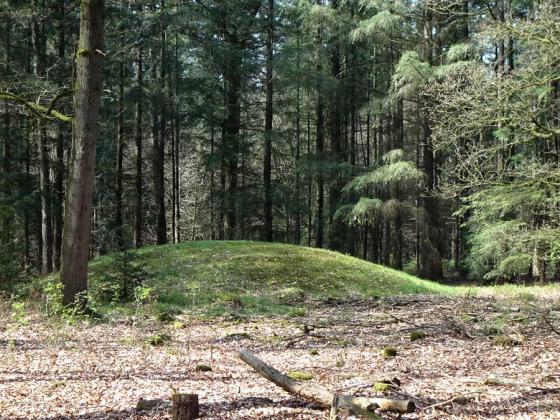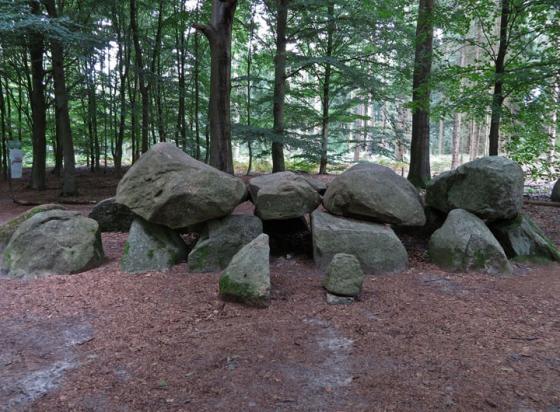
D17 Rolde in the foreground, with D18 Rolde in the background
Visited July 2018

D17 Rolde in the foreground, with D18 Rolde in the background
Visited July 2018

Visited July 2018
D17 Rolde and D18 Rolde are one the most famous Hundebeds pair in Drenthe. They lay opposite the beautiful medieval church Jacobskerk and its graveyard in north Rolde. There is a large car park and a small picnic area, so on summer weekends you might be not alone at the site. When I arrived I was the only person wandering around the Hunebeds, D17 Rolde is a little bit threatened by an old oak, D18 Rolde is the better preserved (or restored) of the two twins.
Visited July 2018
It’s a shame that when D18 was restored they decided on very shiny stainless steel rods which are a bit too visible.
There are two hunebedden at Rolde, just about 50 metres apart. They lie at the edge of the village in parkland next to a magnificent medieval brick built church and graveyard.
D18 is in much better condition than its twin, D17, with all its capstones up. A large hunebed is a textbook example, but I found it strangely characterless.
Antonius Schonhovius Batavius, canon of Bruges, wrote of these hunebeden in 1537 as the remains of what the Roman senator and historian Tacitus had dubbed The Pillars of Hercules of Vico Roelden (village of Rolde). A map of 1642 showed the hunebedden as ‘Reuzenstien’ (giant stones) and a source published in 1688 called them ‘Steenbergh’. An excavation of D17 in 1706 recovered a ‘blue pot’ decorated with glittering gold stripes.
with 3d model, short video (in Dutch), pictures and further information













































